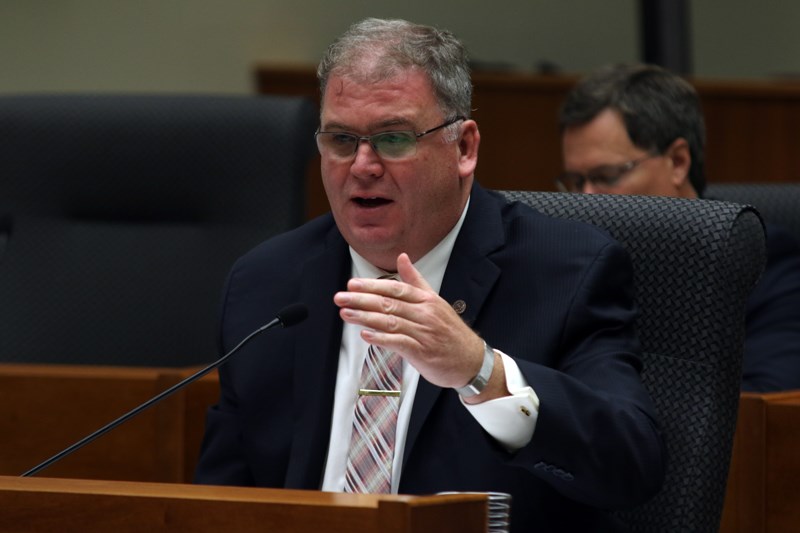Whenever I travel these days, the reaction is the same when people hear I’m from Thunder Bay: “What is going on up there?”
It’s a good question.
Collectively, we feel a sharp pain over the tragic deaths of young Indigenous people attending school here, far from their northern home communities. As well, social issues and racial divisions have been probed in an endless cycle of media stories and social media commentary. It’s as if Thunder Bay has been put under a microscope and everyone is taking turns offering a diagnosis.
Our own, soul-searching diagnosis is that Thunder Bay — like all of Canada — has a sorry record when it comes to many aspects of respecting Indigenous peoples’ rights and culture.
But there is a deeper, more profound way to view what is happening in our city. Thunder Bay, built on the traditional territory of Fort William First Nation, now has the highest proportion of Indigenous to non-Indigenous people in the country. In a very real way, we are the epicentre for the most pressing issue Canadians face — reconciling our past, present and future as Indigenous and Non-Indigenous citizens.
People from scores of communities to the north come to Thunder Bay seeking education, medical treatment, jobs, family and friends, goods and services, and a welcoming refuge from natural disasters.
The sad truth is that they also experience racism and some encounter pressing social issues. As author Tanya Talaga put it speaking recently about her book, Seven Fallen Feathers, Thunder Bay reflects a nation-wide narrative of broken treaties and the destructive results of colonialism and residential schools.
The fallout of these issues overshadows the overwhelmingly positive Indigenous foundations of Thunder Bay’s economy, culture and sense of place.
Some of our efforts are laden with symbolic importance. In 2016, the Fort William First Nation flag was raised permanently alongside the Canadian, Ontario and Thunder Bay flags at city hall. Today, Fort William First Nation and the city are working closely to grow the economy of both communities. And dating back to 2010, the city has signed declarations of commitment to strengthen the city’s relationship with First Nations and Indigenous groups.
Other plans have not come to fruition despite the city’s investment and commitment. The timing, in 2014, was not right to secure matching funding for an $8 million centrally located youth centre and new Indigenous Friendship Centre. How different might youth from the northern communities feel today if the dream of a beautiful, culturally appropriate centre, close to bus routes, trails and green space had been realized?
Some projects are practical and urgent as we work to implement the recommendations of the Seven Youth Inquest. Public safety on the watercourses and rivers is a focus with stepped up patrols, better lighting and other physical improvements. We are also strengthening programs to prepare Thunder Bay to meet the needs of youth coming here. Thunder Bay city council also recently granted a building to Matawa First Nations for an education and care centre that will house high school students from Matawa communities.
On a municipal level, staff is deepening its collective, historical understanding through cultural awareness training programs. We are also seeking assistance from partners such as the Ontario Anti-Racism Directorate, which has shown a keen interest in supporting Thunder Bay’s efforts.
Successful initiatives depend upon sincere collaboration — with Indigenous partners in the lead, and Canada, Ontario, and Thunder Bay citizens pulling together.
At the same time, we remain mindful of a warning by Justice Murray Sinclair not to leap at quick, patchwork solutions: “We need to be able to look back at this from the perspective of where we want to be in three, four, five or seven generations from now when we talk about the relationship between Aboriginal and non-Aboriginal people in this country.”
Reconciliation has different meanings for different people. Most agree it begins with an awareness of the past, acknowledgment of the harm Indigenous peoples have suffered, and a commitment to plan for the future.
Thunder Bay embraces its role in committing to a new relationship between Indigenous and non-Indigenous people. Reconciliation is a process, not a destination.
A deeper look at Thunder Bay tells a story of movement toward reconciliation, caring and an ever-intensifying effort to learn from the country’s First Peoples. We aspire to be a city in which all citizens feel — and are — safe and included.
Norm Gale is the city manager for the City of Thunder Bay. This op-ed originally appeared in the Toronto Star.
